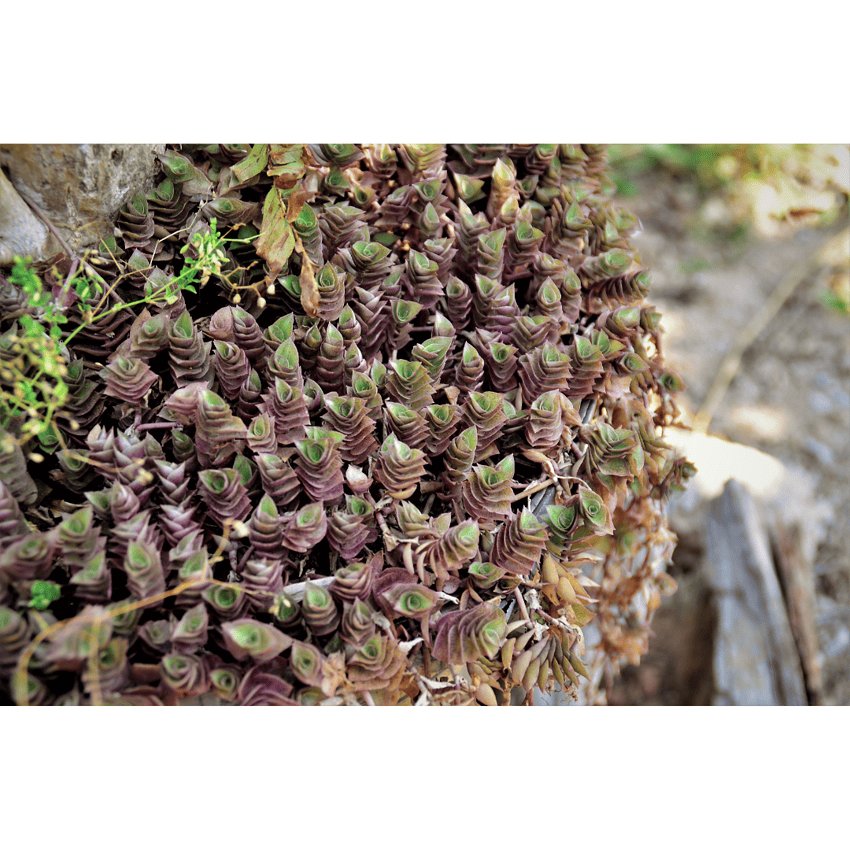Callisia navicularis, also known as Chain Plant or Tradescantia navicularis, is a beautiful and easy-to-care-for houseplant that can add a touch of color and liveliness to any room. It is a creeping succulent with short stems hidden by tight overlapping leaves and sprawling stolons with long internodes from which the short shoots and flowers arise. The leaves are boat-shaped and can vary in color from green to bronze-green above and streaked purple below, depending on the light exposure.
This delightful houseplant is not too commonly seen, but it is gaining popularity among plant enthusiasts and collectors. It is native to Mexico and Central America and belongs to the Commelinaceae family. Callisia navicularis is an excellent choice for beginners and experienced gardeners alike, as it is easy to propagate, care for, and maintain. In this article, we will explore how to grow and care for this beautiful plant, answer some frequently asked questions, and provide some tips and tricks to keep your Chain Plant healthy and thriving.
Key Takeaways
- Callisia navicularis, also known as Chain Plant or Tradescantia navicularis, is an easy-to-care-for houseplant that can add a touch of color and liveliness to any room.
- This delightful houseplant is not too commonly seen, but it is gaining popularity among plant enthusiasts and collectors.
- This succulent is an excellent choice for beginners and experienced gardeners alike, as it is easy to propagate, care for, and maintain.
Overview
Callisia navicularis, also known as Chain Plant or Tradescantia navicularis, is a beautiful and easy-to-grow succulent that belongs to the spiderwort family. Native to Central and South America, this plant is becoming increasingly popular as a houseplant due to its low maintenance requirements and striking appearance.
Description
Callisia navicularis is a creeping succulent with short stems that are hidden by tight overlapping leaves. The leaves are bronze-green above and streaked purple below, giving the plant a unique appearance. The plant also produces sprawling stolons with long internodes from which the short shoots and flowers arise. The flowers are pink or purple and bloom in the summer.
Species
Callisia navicularis is a species of the genus Callisia. There are approximately 20 species of Callisia, all of which are native to the Americas.
Growth Habit
This succulent is a trailing plant that can grow up to 6 inches tall and 24 inches wide. It is a fast-growing plant that can quickly fill a pot or hanging basket. The plant is also known for its air-purifying properties, making it a great addition to any indoor space.
Air Purification
It is known for its air-purifying properties. It can help remove toxins such as formaldehyde, benzene, and xylene from the air, making it a great plant for improving air quality in your home or office.
Care
Callisia navicularis is a low-maintenance plant that is easy to care for. It prefers bright, indirect light and well-draining soil. Water the plant when the top inch of soil is dry, but be careful not to overwater as this can lead to root rot. Fertilize the plant once a month during the growing season with a balanced fertilizer.
Propagation
Callisia navicularis is easy to propagate through stem cuttings. Simply cut a stem with a few leaves and place it in moist soil. Keep the soil moist and the cutting should root within a few weeks.
Common Problems
The most common problem is overwatering, which can lead to root rot. Other problems include spider mites and mealybugs, which can be treated with insecticidal soap or neem oil.
Growing Tips
To encourage bushier growth, pinch back the stems of your plant. You can also train the plant to climb a trellis or support by tying the stems to the support with twine.
Frequently Asked Questions
What are the care requirements for Callisia Navicularis?
This is an easy-to-care-for houseplant that requires moderate to bright indirect light and well-draining soil. It can tolerate low light conditions but will not thrive in them. It prefers temperatures between 60-85°F (15-29°C) and can be grown indoors or outdoors in USDA hardiness zones 9-11.
How often should I water Callisia Navicularis?
Water your Callisia Navicularis when the top inch of soil is dry to the touch. Be sure not to overwater or let the plant sit in standing water, as this can lead to root rot. Watering frequency will depend on the amount of light and humidity in your home, so be sure to check the soil regularly.
What is the ideal temperature for Callisia Navicularis?
Callisia Navicularis prefers temperatures between 60-85°F (15-29°C). It can tolerate slightly cooler temperatures but should be protected from frost. Avoid exposing the plant to extreme temperatures or sudden temperature changes.
What kind of soil does Callisia Navicularis need?
Callisia Navicularis requires well-draining soil. A mixture of potting soil and perlite or sand can help improve drainage. Avoid using heavy soils that retain water, as this can lead to root rot.
How often should I fertilize Callisia Navicularis?
Fertilize your Callisia Navicularis once a month during the growing season (spring and summer) with a balanced fertilizer. Be sure to follow the instructions on the fertilizer package and avoid over-fertilizing, as this can damage the plant.
What pests and diseases commonly affect Callisia Navicularis?
Common pests that can affect Callisia Navicularis include spider mites, mealybugs, and scale insects. These pests can be treated with insecticidal soap or neem oil. Diseases that can affect Callisia Navicularis include root rot and leaf spot. Be sure to avoid overwatering and remove any infected leaves to prevent the spread of disease.


